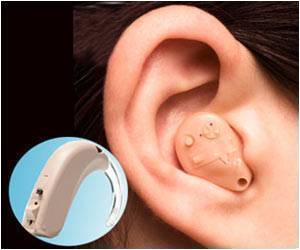The olivocochlear hearing control reflex links the cochlea of each ear via the brain's auditory control center to help balance hearing between the ears

"The balance of hearing between the ears is dependent upon this neural reflex that links the cochlea of each ear via the brain's auditory control center," explained senior researcher Gary Housley.
Our hearing is so sensitive that we can hear a pin drop and that is because of the "cochlear amplifier" in our inner ear. This stems from outer hair cells in the cochlea which amplify sound vibrations.
In animal experiments, the team found that the cochlear's outer hair cells, which amplify sound vibrations, also provide the sensory signal to the brain via a small group of auditory nerve fibers of previously unknown function.
In mice lacking the sensory fiber connection to the cochlear outer hair cells, loud sound presented to one ear had no effect on hearing sensitivity in the other ear.
In normal mice, this produced an almost instant suppression of hearing. The researchers speculate that some of the hearing loss that humans experience as they age may be related to the gradual breakdown of this sensory fiber connection to the outer hair cells.
The research is published in the Journal Nature Communications
 MEDINDIA
MEDINDIA



 Email
Email








